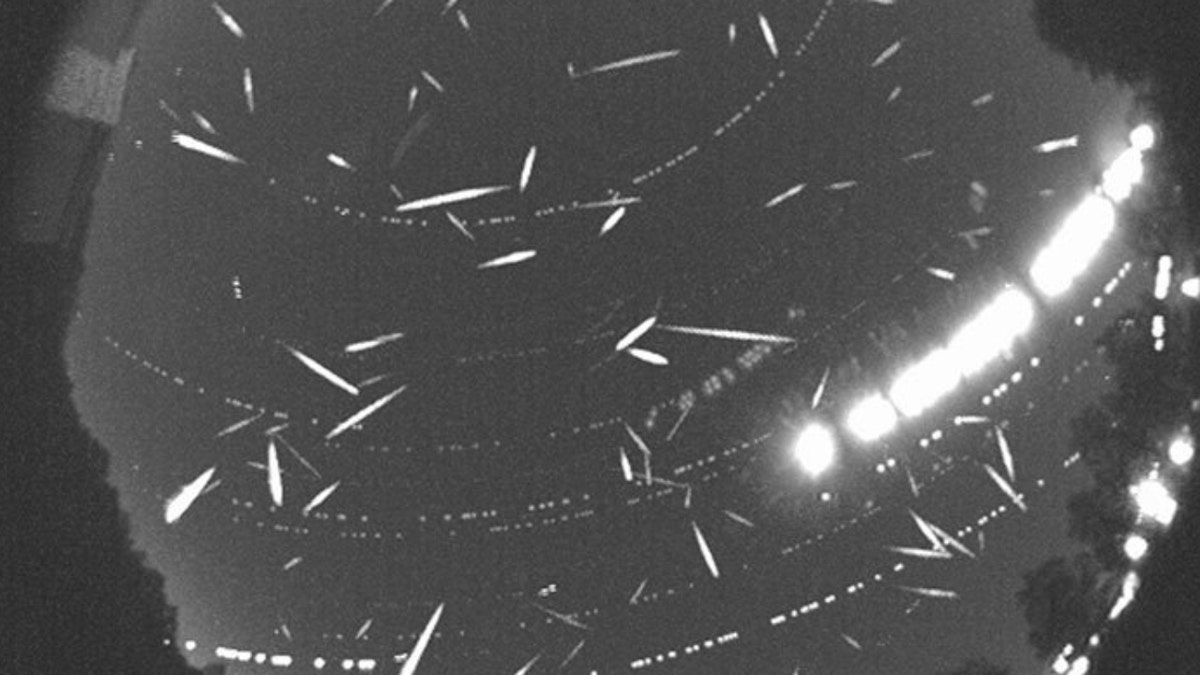The annual Leonid meteor shower peaks late Friday night.
According to NASA, the Leonids are debris shed by comet Tempel-Tuttle as it passes close to the sun.
As bits of comet debris enter the Earth's atmosphere and burn up, they leave bright streaks across the night sky.
Observers can look straight overhead for the shower, with bright meteors that leave a trail that lasts for a few seconds.

A burst of 1999 Leonid meteors as seen at 38,000 feet from Leonid Multi Instrument Aircraft Campaign (Leonid MAC) with 50 mm camera. (Image Credit: NASA/Ames Research Center/ISAS/Shinsuke Abe and Hajime Yano)
However, the moon is about 35% full and will diminish the fainter meteors.
There will be around 15 to 20 meteors per hour under clear, dark skies.

At 1:45 am MT on Nov. 17, NASA’s all sky camera at the New Mexico State University caught this image of a Leonid meteor streaking through the skies. (NASA)
NASA TELESCOPE SHOWS SPECTACULAR HOURGLASS IMAGE SURROUNDING STAR FORMATION
The shower's name comes from the constellation Leo, the lion, from which its meteors appear to radiate.

Over 100 meteors are recorded in this composite image taken during the peak of the Geminid meteor shower in 2014. (Credit: NASA/MSFC/Danielle Moser, NASA's Meteoroid Environment Office)
While the moon will rise in the east with Leo around midnight local time, it's better to view the sky away from the apparent point of origin by lying back and looking straight upward.
The comet Tempel-Tuttle was actually discovered twice, independently.
CLICK HERE TO GET THE FOX NEWS APP
In December, skywatchers can anticipate the Geminids and Ursids.


